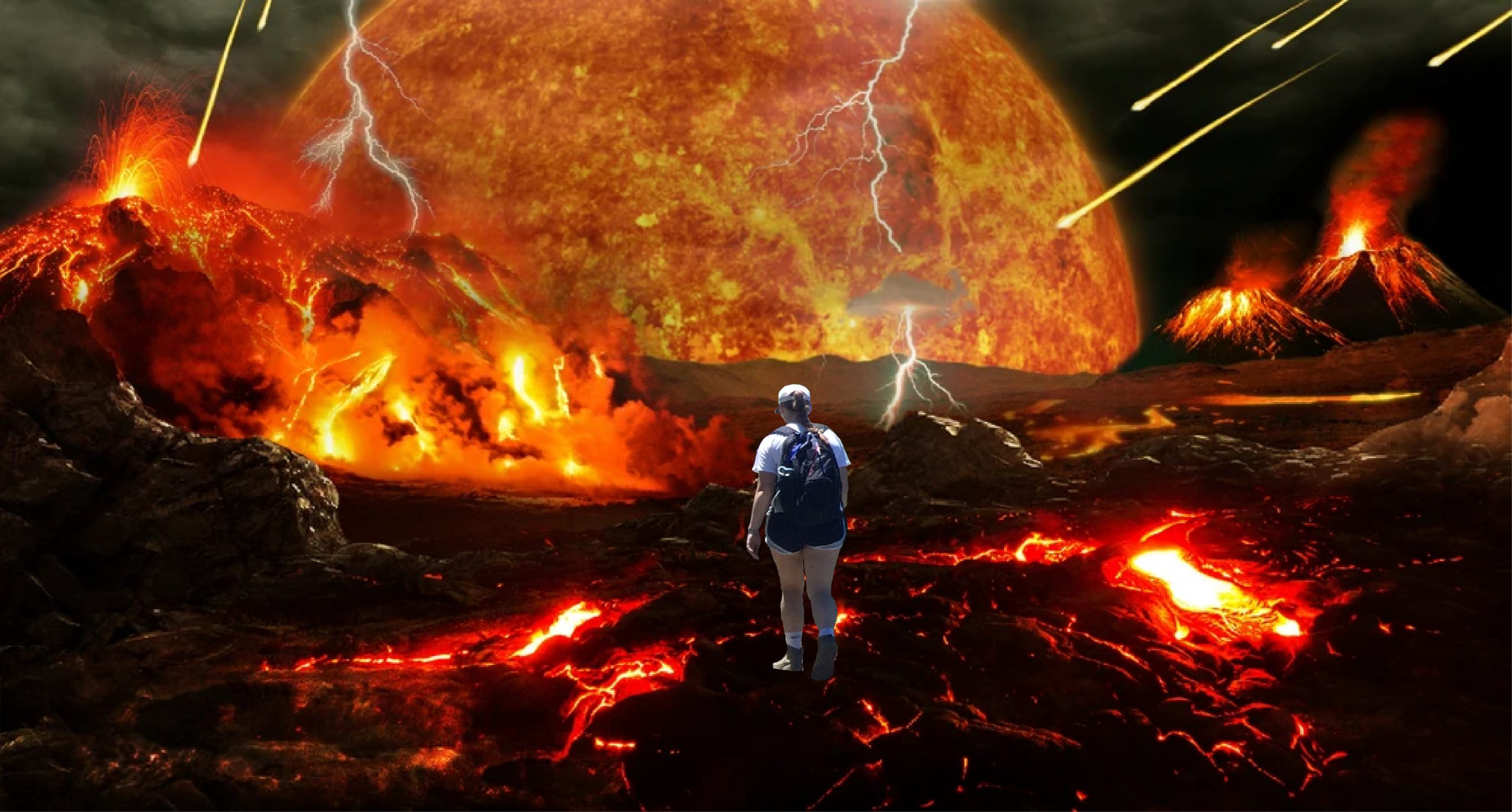If Geologic Time Were Measured In PCT Miles, How Long Would Your Life/Thru-Hike Be?
The Earth is a staggering 4,550 million (4.55 billion) years old. Let’s make this more relatable. Assume the southern terminus of the PCT represents the Earth forming and the northern terminus is today. The trail is 2,650 miles long, so each mile translates to 1.7 million years. The average hiker takes around 2,000 steps per mile, so every step is roughly equal to 1,000 years. At this scale, a retired (age ~65 years) hiker’s life is a little over two inches long. A hiker taking a gap year after college is just under one inch worth of trail.
Feeling small? Maybe placing key Earth events in the context of PCT miles will help (see map toward the bottom of this post). Let’s hike north and through time from the Mexican border with each trail mile equalling 1.7 million years.**
Deep Time on a Long Trail
The first significant event would be the formation of the Moon at trail mile 29 (4.5 billion years ago), between Lake Morena and Mt. Laguna. We encounter Earth’s oldest preserved rocks at mile 320, approaching Cajon Pass. The first fossil evidence shows up at mile 612 (3.5 billion year old algae), as we emerge from the Mojave and begin climbing into the Sierras.

Hiking the PCT 4 billion years ago. The moon would have been much closer to Earth. And the hazards to mitigate would have been kinda different.
We don’t encounter the first animals (sponges) until about 750 million years ago, a significant trail distance later at mile 2213 (near Trout Lake, Washington). As you approach Snoqualmie Pass (mile 2376; 470 million years ago), you begin seeing the first land plants, which resembled modern mosses and liverworts. Descending Snoqualmie Pass to the north, you see the first woody stemmed trees (mile 2417; 360 million years ago).
Between Skykomish and Stehekin, you’d encounter the first dinosaurs (mile 2510; 240 million years ago) and the first mammals (mile 2519; 225 million years ago). The first flowers appear on the side of the trail just outside of Stehekin (mile 2568; 140 million years ago). The dinosaurs go extinct 66 million years ago (mile 2612) as you near Harts Pass.

Map of the Pacific Crest Trail, with the timing of key events in Earth history translated to trail miles (base modified from Andrew Alfred-Duggan’s 2018 PCT overview map). Inset map base from Gaia GPS.
Congratulations, weirdo! As you stand there with your tongue touching the northern terminus, you’ve completed your thru-hike! The amount of time required to accomplish this feat works out to less than half a millimeter of trail distance.
**Note that the precise timing of pretty much all of the events described are controversial and are constantly being refined by the latest science. One notable example that usually results in geoscience conference-clearing brawls concerns when plate tectonics began. Current estimates range from as old as 4 to as recent as 1 billion years ago, depending on who you ask. If I were to put “plate tectonics begins” on the map, it would plot somewhere between Southern California and Northern Oregon. The point here is that individual events may be off by a few trail miles (i.e. a handful of millions of years). No big deal, right?
This website contains affiliate links, which means The Trek may receive a percentage of any product or service you purchase using the links in the articles or advertisements. The buyer pays the same price as they would otherwise, and your purchase helps to support The Trek's ongoing goal to serve you quality backpacking advice and information. Thanks for your support!
To learn more, please visit the About This Site page.


Comments 8
Alan, you’ve outdone yourself 😂 Truly a unique piece here. Love the thought that went into all the graphics!
Thanks Jess – it was super fun to put together!
This is sick
Thanks Josh – glad you enjoyed it!
What a fun read! Thanks!
Thanks Misty – just saw you’re doing the SHT this September. I looove that trail! Feel free to get in touch if you’d like to chat about the trail and associated logistics more!
You *are* planning to compile this all into a book one day…right? This is awesome! I knew I’d love it. 🙂
Thanks Professor Jellybean! I had a feeling you’d enjoy it. The thought had crossed my mind about a book…